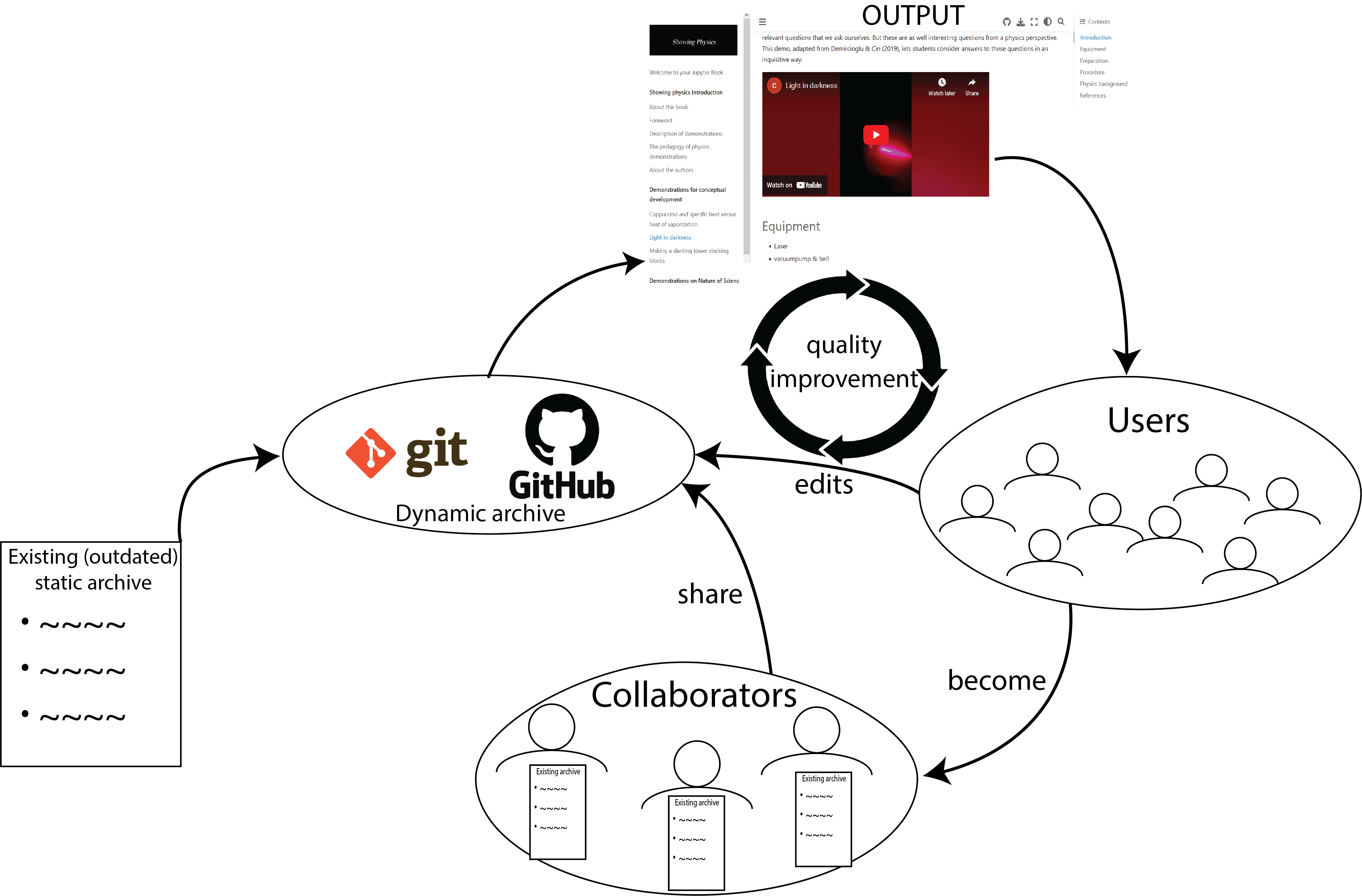About this book#
This book started off as a collection of pdf’s from the ’90s. We realised this was a valuable but static and outdated archive. We envisioned an updated online and dynamic repository of physics demonstrations which is accessible to all. By utilizing GitHub we would enable others to contribute, allow them to offer suggestions, fix bugs, while maintaining version control and ensuring quality. Our ultimate goal was to create a ‘living’, ‘ever-growing’ repository where the quality of the demonstrations can be continuously enhanced through active contributions from fellow educators, see Our approach to creating a living, ever-growing repository..

Fig. 1 Our approach to creating a living, ever-growing repository.#
Hence we set to work, converting the pdf’s to markdown files (the work of Luuk Fröling) and creating a first Jupyter Book. All drawings were remade, resulting in high-quality vector drawings (the work of Hanna den Hertog). New pictures and video’s were made (with the help of Tom Haanstra). Where possible, python codes where added, allowing for simulations and data analysis. This resulted in this book ‘The Demonstration Laboratory’.
We consider the book not finished, as it is intended as an ever expanding repository. The book is an output of a dynamic repository. We can add and change demonstrations, improve the quality of descriptions, add code, and so on. You may contribute to this, and you will be recognized for it!
Your contribution#
You can contribute to this book in various ways:
Enhance the quality by adding comments and/or suggestions using the issue button below the button.
Add content
If you spot a typo, if something is not clear, or anything needs to be adjusted, click the button at the top of the screen and open an issue by clicking on the button. (You need to have a github account though). We then receive a notification of your query, and we will address the issue as soon as possible.
If you want to add your material, you can do so by contacting us. You can become a team member of the github repository and are allowed to add materials. If you are interested in how this works, see the teachbooks manual on the matter.
Editors#
Ron Haaksman
Freek Pols
Contributors#
Hanna den Hartog
Luuk Fröling
Tom Haanstra
Carola van der Muren (and her team of TA’s)
Licences#
CC-BY-4.0
All drawings have been made by Hanna den Hartog. The videos were mainly recorded for the various courses at the Applied Physics and Nanobiology program at Delft University of Technology.
Contact#
Delft University of Technology
Faculty of Applied Sciences
Department: Imaging Physics
Group: Science & Engineering Education
R. Haaksman
Room: A162
Lorentzweg 1
2628 CJ Delft
The Netherlands
E-mail: R.P.H.Haaksman_at_TUDelft.nl
F. Pols
Room: A005
Lorentzweg 1
2628 CJ Delft
The Netherlands
E-mail: c.f.j.pols_at_tudelft.nl
